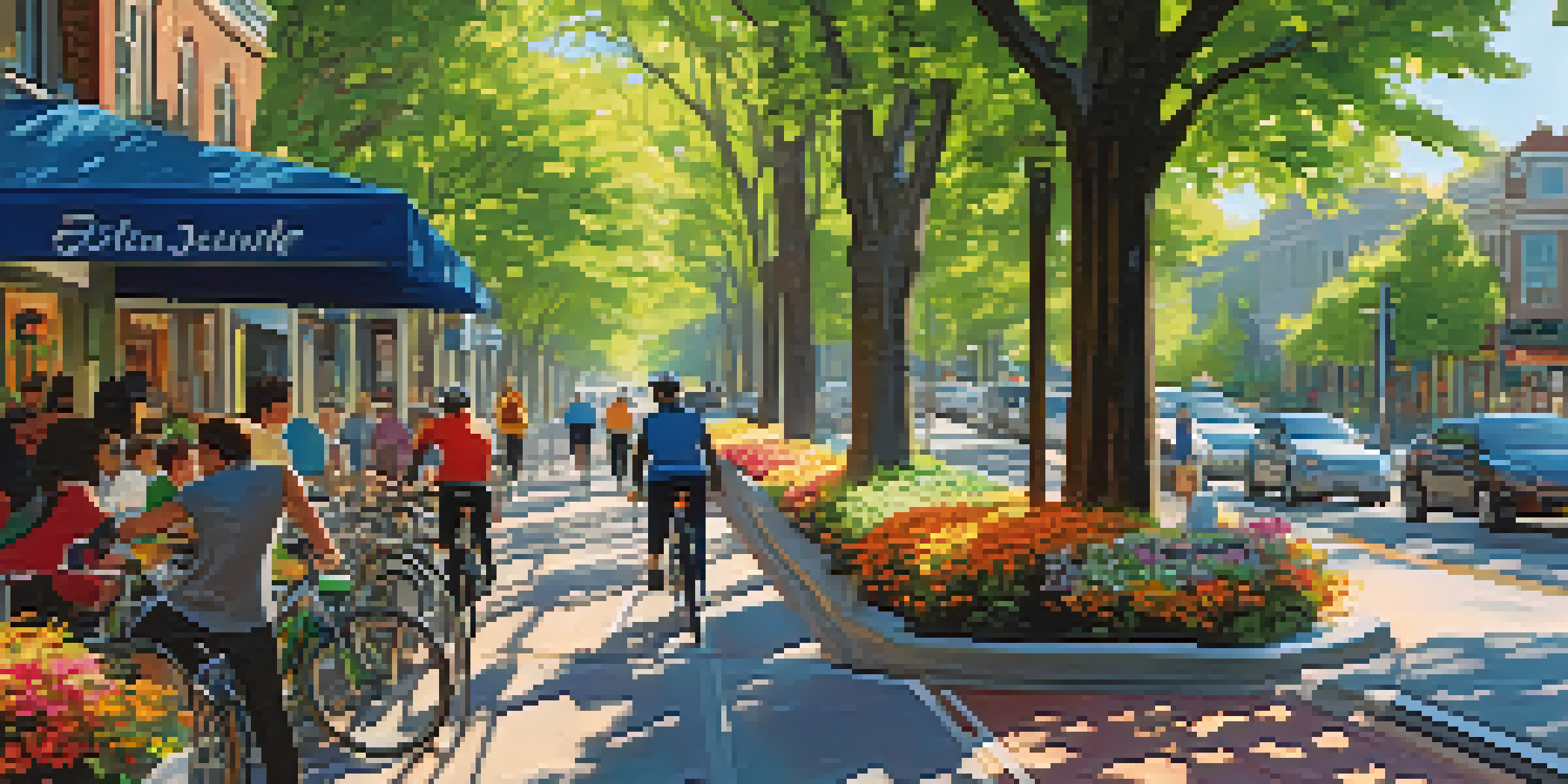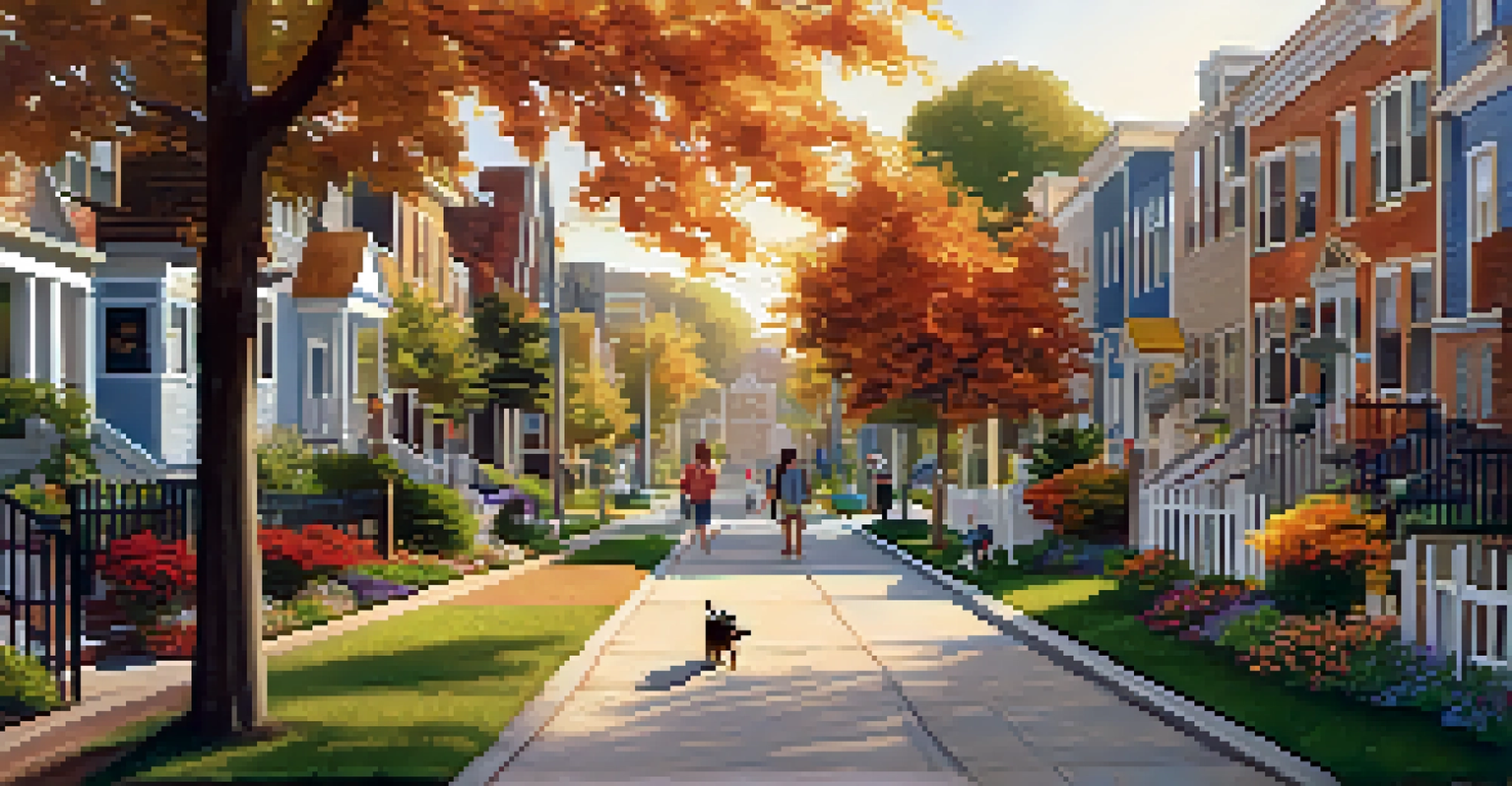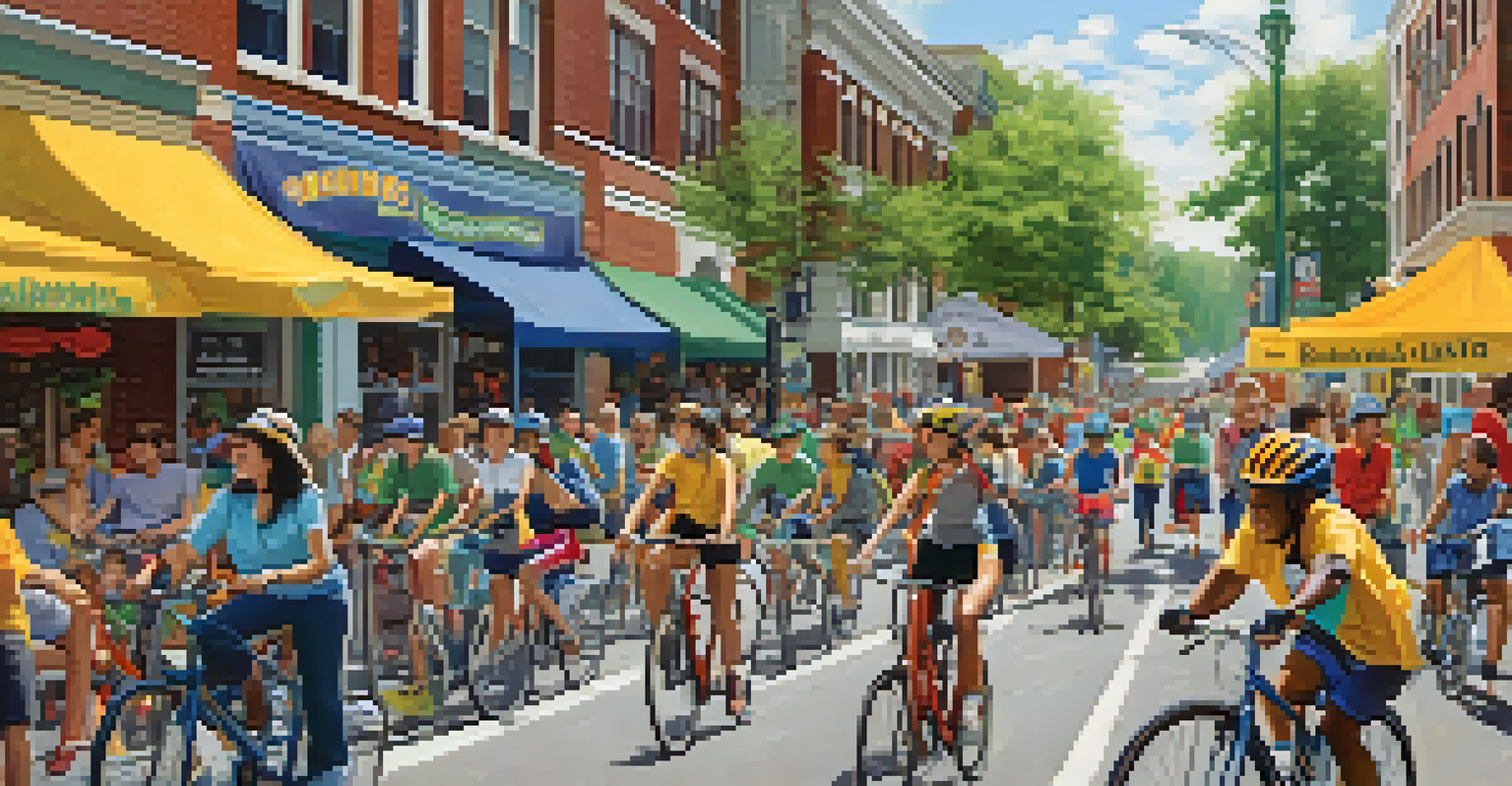Biking and Walking: Integrating Non-Motorized Transit in San Jose

The Importance of Non-Motorized Transit in Urban Areas
Non-motorized transit, such as biking and walking, plays a pivotal role in urban environments. It reduces traffic congestion, lowers pollution levels, and promotes healthier lifestyles. In cities like San Jose, integrating these modes of transport can transform the way residents commute and interact with their surroundings.
The bicycle is a curious vehicle. Its passenger is its engine.
Moreover, non-motorized transit fosters community engagement by encouraging people to explore their neighborhoods on foot or by bike. This method of travel allows for a more intimate experience of the city, providing opportunities for social interactions and local business support. With the growing emphasis on sustainability, cities are recognizing the need for infrastructure that supports these modes.
San Jose's commitment to enhancing non-motorized transit contributes to a more vibrant urban landscape. By prioritizing pedestrian and cyclist safety, the city can create an environment where residents feel comfortable and encouraged to leave their cars behind.
Current State of Biking and Walking in San Jose
As of now, San Jose boasts a variety of biking and walking paths, but there's still room for improvement. The city has made strides in developing bike lanes and pedestrian-friendly areas, yet many residents feel that safety and accessibility remain concerns. According to recent surveys, many potential cyclists are deterred from biking due to inadequate infrastructure and fears of accidents.

Walking pathways also require attention, as some neighborhoods lack proper sidewalks or safe crossings. Ensuring that these routes are well-maintained and clearly marked can significantly enhance the walking experience. A well-connected network for both pedestrians and cyclists can encourage more residents to choose these modes of transport over driving.
Non-Motorized Transit Boosts Health
Biking and walking significantly enhance public health by promoting regular physical activity and reducing chronic illness rates.
To further promote biking and walking, San Jose can learn from successful initiatives in other cities. By analyzing best practices and adapting them to local needs, San Jose can create a more inviting environment for non-motorized transit.
Benefits of Biking and Walking in San Jose
One of the most significant benefits of biking and walking is the positive impact on public health. Regular physical activity can lead to reduced rates of obesity, heart disease, and other chronic illnesses. By integrating more biking and walking options, San Jose can help its residents lead healthier lives.
Walking is a man's best medicine.
Additionally, encouraging these modes of transport can reduce traffic congestion and improve air quality. Less reliance on cars means fewer emissions, which is crucial for combating climate change and creating a more sustainable city. Every bike ride or walk taken contributes to a cleaner environment.
Lastly, biking and walking foster economic growth by increasing foot traffic in local businesses. As more people choose to explore their neighborhoods on foot or bike, shops and restaurants can benefit from increased visibility and patronage.
Challenges Facing Biking and Walking Initiatives
While the benefits of non-motorized transit are clear, several challenges hinder their integration in San Jose. A significant issue is the perception of safety among potential cyclists and pedestrians. Without dedicated lanes and protective measures, many individuals feel vulnerable on the roads.
Funding and resources also pose challenges for expanding biking and walking infrastructure. Cities often have competing priorities, which can lead to delays in projects that enhance non-motorized transit. Advocating for budget allocations that emphasize these initiatives is essential for future progress.
Community Engagement Drives Change
Active community involvement, through advocacy and events, is crucial for promoting biking and walking initiatives in urban areas.
Lastly, community awareness and education are vital for promoting biking and walking. Many residents may not be aware of existing paths or the benefits of choosing these modes of transport. Engaging the community through events and informational campaigns can help bridge this knowledge gap.
Innovative Solutions to Promote Non-Motorized Transit
To overcome the challenges facing biking and walking in San Jose, innovative solutions are essential. For example, implementing bike-sharing programs can provide residents with easy access to bicycles without the need for ownership. This can attract individuals who might not otherwise consider biking.
Creating 'complete streets' that prioritize all forms of transport, including biking and walking, helps develop a more inclusive urban environment. These streets incorporate features like protected bike lanes, wider sidewalks, and safe crossings, making them more accessible for everyone.
Lastly, leveraging technology through mobile apps can enhance the biking and walking experience. Apps that provide real-time information on bike availability, route mapping, and safety alerts can encourage more residents to opt for these modes of transit.
Community Engagement and Advocacy
Engaging the community is crucial for successful biking and walking initiatives in San Jose. Local advocacy groups play a vital role in raising awareness and promoting the benefits of non-motorized transit. These organizations can also provide valuable feedback to city planners regarding the needs and desires of residents.
Community events such as bike-to-work days, walking tours, and workshops can foster a sense of camaraderie among residents. These activities not only promote the use of biking and walking but also empower individuals to take an active role in shaping their city’s transit landscape.
Infrastructure Enhancements Needed
Improving biking and walking infrastructure is essential to address safety concerns and encourage more residents to choose these modes of transit.
By creating a culture that values biking and walking, San Jose can encourage more residents to adopt these modes of transport. A strong community connection can lead to increased support for policies and initiatives that prioritize non-motorized transit.
The Future of Biking and Walking in San Jose
Looking ahead, the future of biking and walking in San Jose looks promising. With ongoing efforts to expand infrastructure and promote community engagement, more residents may choose to embrace these modes of transit. As the city continues to prioritize sustainability, biking and walking will play a crucial role in shaping urban mobility.
Additionally, advancements in technology and urban planning can further enhance the biking and walking experience. Smart traffic signals, improved signage, and dedicated paths can create a seamless transit experience for cyclists and pedestrians alike.

Ultimately, the integration of non-motorized transit in San Jose can lead to a healthier, more vibrant city. By working together—residents, city officials, and advocacy groups—San Jose can create an urban environment that celebrates biking and walking as essential components of community life.